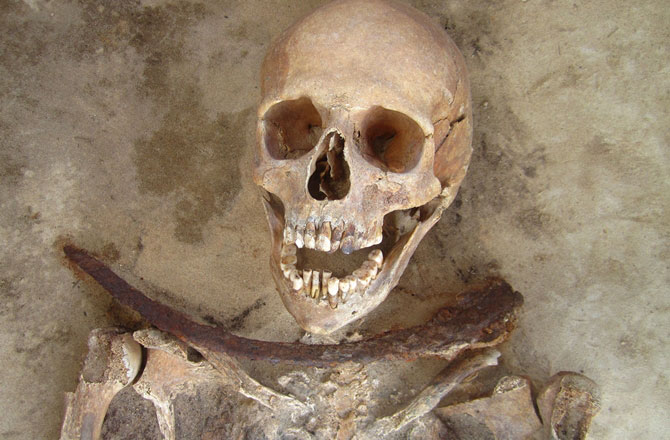“Vampires” buried in northwestern Poland with large stones wedged into their mouths or sickles over their necks were local people probably affected by cholera, says the first biogeochemical study of human skeletal remains from deviant burials.
The study investigated 285 human skeletons which were excavated between 2008-2012 from a post medieval cemetery in Drawsko, a rural settlement site in northwestern Poland. Dating to the 17th and 18th centuries, the remains represented individuals of all ages and both sexes.
Among the interments, six were identified as so-called vampire burials. They included an adult male, a late adolescent female, three adult females, and a younger person of unknown sex.
“Of these six individuals, five were interred with a sickle placed across the throat or abdomen, intended to remove the head or open the gut should they attempt to rise from the grave,” Lesley Gregoricka from University of South Alabama and colleagues, wrote in the open-access journal PLOS ONE.
The remaining two people were found with large stones positioned beneath their chins — evidence, the researchers say, that it was feared the individuals would rise from their graves to bite others.
Gregoricka and colleagues first hypothesized the people buried as vampires were targeted because of their outsider status as immigrants.
Indeed, abundant written evidence for the post-medieval period describes many waves of immigrants entering into Poland during that time.
To test their hypothesis, the researchers tested permanent molars from 60 individuals, including the six “vampires,” using radiogenic strontium isotope ratios from archaeological dental enamel. Local animals, including hare, mice and fox, were also sampled.
“While historic records describe the many potential reasons why some people were considered at increased risk of becoming a vampire, no previous study had attempted to examine the identity of these individuals using chemical analyses of the human skeleton,” Gregoricka told Discovery News.

